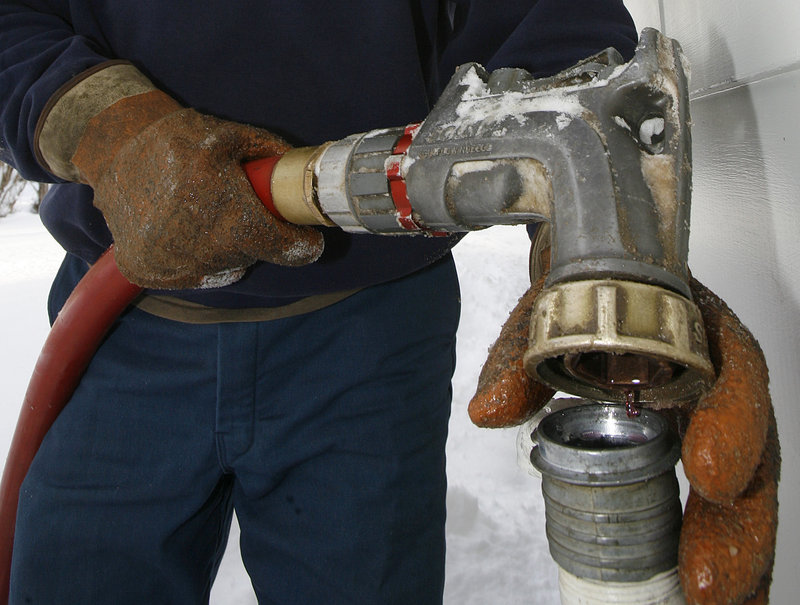MONTPELIER, Vt. – Cold-weather states around the Northeast are watching uneasily — and in some cases making contingency plans — as Congress decides how much to cut federal home heating aid.
Top state officials say the issue must be resolved soon because temperatures are dropping, and low-income residents need help now.
“It would be impossible for Vermont and probably most other states struggling financially to replace the (federal) funds,” Gov. Peter Shumlin said Tuesday on a conference call with Gov. Lincoln Chafee of Rhode Island and the lieutenant governors of Massachusetts and Connecticut. Shumlin said the result could be residents “freezing in their homes.”
The Obama administration has proposed cutting money for the Low-Income Home Energy Assistance Program in half — to about $2.5 billion nationwide. A spending bill in the U.S. House calls for cutting spending to $3.4 billion; the Senate is proposing $3.6 billion.
Cuts that deep are “a mean, rotten, selfish thing for the government to do to its own people,” Jean Park of Bennington told Vermont lawmakers taking testimony on the issue Tuesday.
Carol Shepard of South Royalton said she received more than $1,200 in fuel assistance last year, but had been told to expect just $319 this year. “What do I give up, as that is what it comes down to?” she asked. “Food? Prescriptions? Lights? Power?”
In Maine, John Butera, senior economic adviser to Gov. Paul LePage, said the state faced a $30 million cut in its federal funding. Last year, the average Maine household got a benefit worth slightly less than $1,000. The Obama administration’s proposed cut would reduce that by about two-thirds, Butera said.
LePage, for now, has his eyes on funds from Efficiency Maine, the state’s weatherization and energy conservation agency. LePage wants $10 million set aside from that agency as a contingency, and he’s also asked Maine State Housing Authority Director Dale McCormick to develop a contingency plan.
New Hampshire already has cut income eligibility for heating aid from $44,700 for a family of four to about $28,000.
Some states plan to prioritize getting aid to certain populations, such as the elderly, disabled and families with small children.
Hollie A. Gilroy, spokeswoman for the New Jersey Department of Community Affairs, advised that “it’s important that those who may qualify for LIHEAP assistance get their requests in as soon as possible.”
New York cut its maximum benefit from $700 to $500. At $3.60 a gallon for home heating oil, that’s enough to fill half a standard 275-gallon tank.
Obama’s budget for heating aid would cut the amount going to Connecticut from $115 million last year to less than $50 million this year. Benjamin Barnes, budget director for Gov. Daniel P. Malloy, said the state has no plans to chip in, but that could change.
Shumlin put the impact of the possible cut in gallons of heating oil. The average Vermont household receiving assistance was able to use funds from the government program to buy 262 gallons of oil. The typical household uses 600 to 800 gallons each heating season. The Obama administration proposal would translate to 96 gallons per household at current prices, Shumlin said. The House plan would provide 178 gallons; the Senate’s, 192, he said.
Massachusetts Lt. Gov. Tim Murray warned that drastic cuts could force people out of their homes and into shelters. Chafee said elderly residents getting heating assistance likely would be forced to move into nursing homes — significantly raising costs to the states for Medicaid.
Send questions/comments to the editors.



Success. Please wait for the page to reload. If the page does not reload within 5 seconds, please refresh the page.
Enter your email and password to access comments.
Hi, to comment on stories you must . This profile is in addition to your subscription and website login.
Already have a commenting profile? .
Invalid username/password.
Please check your email to confirm and complete your registration.
Only subscribers are eligible to post comments. Please subscribe or login first for digital access. Here’s why.
Use the form below to reset your password. When you've submitted your account email, we will send an email with a reset code.